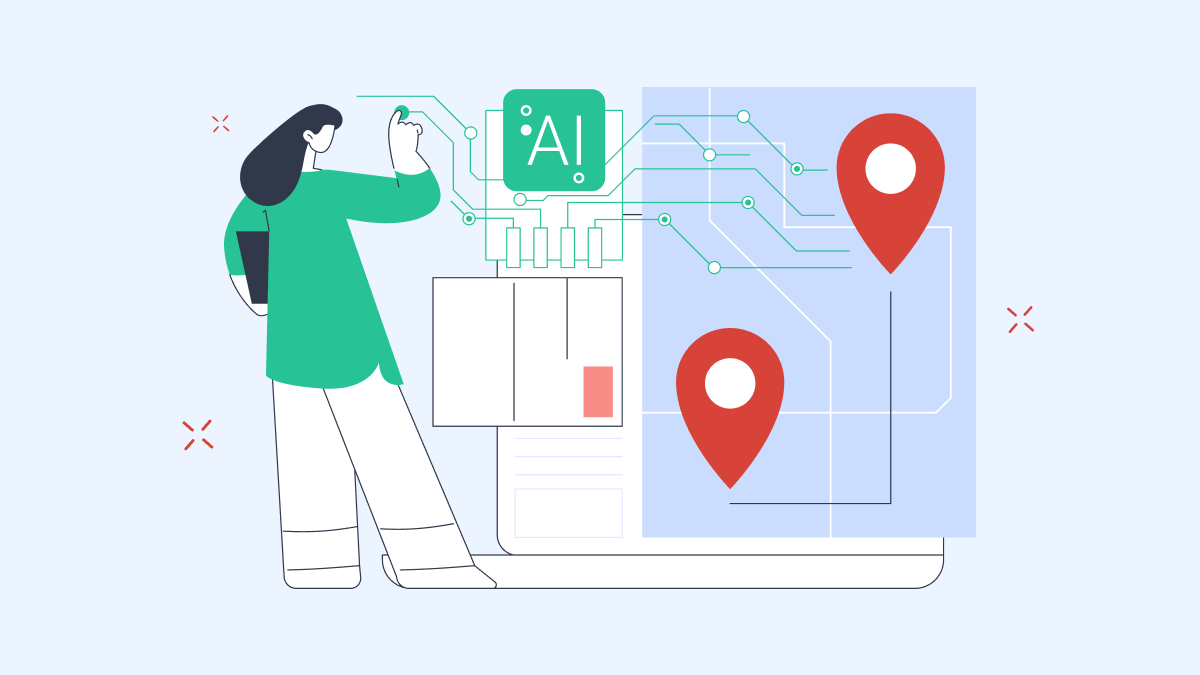.png)
In Southeast Asia, AI Isn’t Just Inevitable. It’s Local
AI in Southeast Asia is evolving with local relevance at its core. Here’s how countries are adapting AI for their own cultures, languages, and economies.
.svg)

If Silicon Valley's scale shapes AI in the West, AI in Southeast Asia is shaped by something more powerful: context.
From hyper-local languages to dense urban sprawl, from informal economies to island-wide logistics—Southeast Asia doesn’t need AI that’s just powerful. It needs AI that understands where it’s operating.
As adoption across the region accelerates, one thing is becoming clear: the most successful AI deployments aren’t generic. They’re deeply local.
Local Relevance Is the Killer Feature
While the West debates the ethics of AI-generated novels, Southeast Asian brands are asking: Can your chatbot speak Tagalog? Can your delivery model navigate Jakarta’s traffic? Can your voice assistant understand Manglish?
This region’s AI needs aren’t theoretical. They’re transactional.
“It’s not about general intelligence. It’s about contextual intelligence.”
— CEO, AI startup in Manila
Take Grab, for example. It didn’t just build a ride-hailing AI. It built one that accounts for cash payments, poor connectivity, and localized route optimization—because those factors matter far more than just model precision in this market.
Why Local Matters More Here Than Elsewhere
Three reasons explain why localization isn't optional in Southeast Asia:
1. Multilingual and Multicultural Complexity
- Over 1,000 languages are spoken across the region.
- Customer service, marketing, and even compliance must adapt to diverse dialects and cultural norms.
Large Language Models (LLMs) trained on Western corpora just don’t cut it. Startups are now training multilingual AI on local content: Malay, Vietnamese, Thai, Khmer, and beyond.
2. Infrastructural Diversity
From 5G-powered Singapore to rural areas with low-bandwidth SMS as the norm, AI has to flex.
Smart brands are building hybrid interfaces—combining AI chat in apps with voice bots for call-in orders or WhatsApp-based commerce.
3. Informal and Mobile-First Economies
- A majority of the population accesses the internet via mobile.
- Informal markets dominate sectors like food, transport, and retail.
This means AI must be embedded in everyday, accessible formats—like QR code menus or AI-powered WhatsApp ordering—rather than enterprise SaaS tools.
Examples of Local AI in Action
- Malaysia: Boost AI enables conversational payments and personalized finance via Bahasa-first interfaces.
- Philippines: AI call routing at Telco companies now distinguishes regional accents to reduce dropped calls.
- Indonesia: Bukalapak and Tokopedia are investing in AI to improve delivery ETA predictions across island provinces.
- Vietnam: ELSA Speak uses localized NLP to help Vietnamese users learn English with a cultural context built in.
Southeast Asia’s Edge: Fast Feedback Loops
Localization isn’t just about language—it’s about iteration.
In Southeast Asia, AI development benefits from direct access to:
- Dense urban testing grounds (e.g., Bangkok, Ho Chi Minh City)
- Close government-private partnerships in smart city initiatives
- An abundance of user behavior data across mobile commerce, social media, and ride-hailing
These conditions allow startups and enterprises to ship, learn, and re-train faster than in slower-moving economies.
What Businesses Need to Do Differently
If you’re building or expanding AI in Southeast Asia:
- Think Local First: Don’t assume Western-trained models will translate—linguistically or contextually.
- Build for Bandwidth: Optimize your models and UI for mobile-first, sometimes offline environments.
- Use Local Data Responsibly: Be transparent about training data, especially where data privacy laws are still emerging.
- Find Local Partners: From NLP startups to regional dev shops, there’s deep talent already solving for these challenges.
Final Take
AI in Southeast Asia won’t be a carbon copy of what’s built in the US or China. It’s being built to fit—and shape—the local reality.
And that’s a competitive advantage. Because when AI reflects the people and places it serves, it doesn’t just work better. It gets adopted faster.
For every business decision-maker eyeing this region, the question is no longer if Southeast Asia will embrace AI. It’s whether your AI will embrace Southeast Asia.
Join Over 20,000 Locations Worldwide
See how Momos helps winning companies drive revenue and manage customer experience across 600+ brands globally.


.webp)